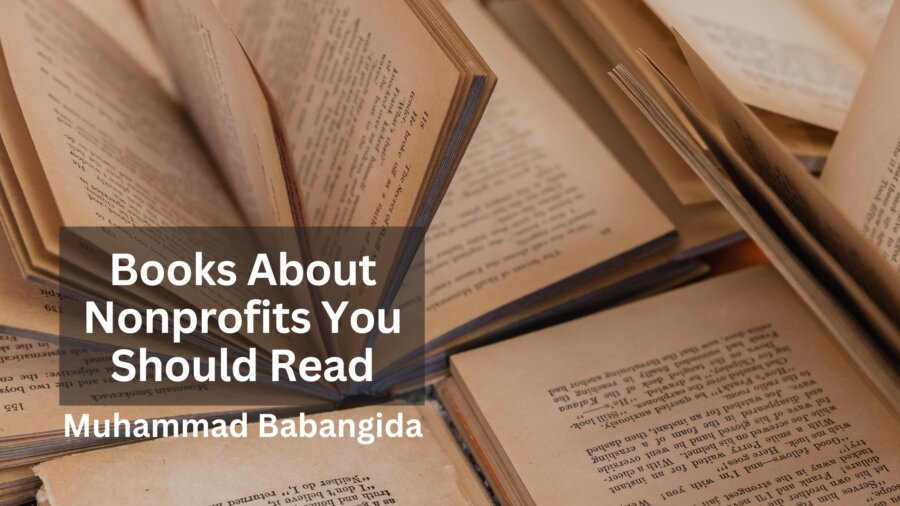In nonprofits’ dynamic and often challenging world, knowledge is a crucial driver of success. Books written about this sector can provide invaluable insights, strategies, and inspiration for those involved or interested in nonprofit organizations. They serve as guides, illuminating the intricacies of nonprofit management, fundraising, governance, and impact creation. Whether you’re a seasoned professional in the nonprofit arena or a newcomer eager to make a difference, these books offer a wealth of knowledge drawn from real-world experiences and expert research.
The nonprofit sector, characterized by its mission-driven focus and commitment to social causes, uniquely differs from the for-profit world. It operates under different dynamics and challenges, including fundraising, volunteer management, board governance, and impact measurement. Knowledge in these areas is valuable and essential for anyone looking to make a significant impact through their work in this sector.
Books about nonprofits come from various authors: seasoned executives, academics, and consultants with extensive experience in the field. They cover different topics, from practical day-to-day management and innovative fundraising strategies to broader discussions on the role of nonprofits in society and the evolving landscape of social entrepreneurship. These texts provide both foundational knowledge and advanced insights, helping readers navigate the complexities of the nonprofit world.
These books are instructional and inspirational, often filled with stories of transformation and impact that exemplify the potential and challenges of working in the nonprofit sector.
“Nonprofit Management 101” by Darian Rodriguez Heyman
“Nonprofit Management 101” by Darian Rodriguez Heyman is essential for anyone involved in the nonprofit sector. This comprehensive guide covers various topics crucial for successful nonprofit management. From effective fundraising strategies and marketing to volunteer management and governance, the book provides practical, actionable advice.
Each chapter is written by a different expert in the field, offering a diverse range of perspectives and insights. This format makes the book uniquely valuable, as it covers each aspect of nonprofit management in depth, guided by someone with first-hand experience and success in that area.
“Nonprofit Management 101” is renowned for its accessible and reader-friendly style. It breaks down complex concepts, making it an ideal starting point for field newcomers while offering depth and detail that can benefit experienced practitioners. The book’s comprehensive nature makes it an invaluable reference that readers will return to repeatedly for guidance and inspiration.
“Forces for Good: The Six Practices of High-Impact Nonprofits” by Leslie R. Crutchfield and Heather McLeod Grant
This thought-provoking book challenges conventional wisdom about how nonprofits achieve impact. The authors identify six practices that they argue are central to the success of high-impact nonprofits based on an extensive study of successful organizations.
These practices include advocacy, harnessing market forces, and creating strong networks. It’s an insightful read encouraging nonprofit leaders to think differently about their strategies and organizational models.
What sets this book apart is its focus on impact rather than organizational efficiency or fundraising success. It pushes readers to consider how their work can achieve the most significant effect in their chosen cause areas. The emphasis on practical examples and real-world application makes it an invaluable resource for nonprofit leaders and stakeholders looking to increase their organization’s impact.
“The Happy, Healthy Nonprofit: Strategies for Impact Without Burnout” by Beth Kanter and Aliza Sherman
This book addresses an often-overlooked aspect of nonprofit work: the well-being of those who work within these organizations. The book acknowledges that passion for a cause does not immune one to burnout and emphasizes the importance of self-care and organizational health.
Kanter and Sherman offer practical strategies for building a sustainable work culture that prioritizes the well-being of employees and volunteers. They discuss implementing wellness practices in the nonprofit workplace, from personal stress management to creating a supportive organizational environment.
This book is particularly relevant in the modern nonprofit sector, where the lines between work and personal life are increasingly blurred. It’s a critical read for nonprofit leaders who recognize that the health of their organization is intrinsically linked to the well-being of their team.


